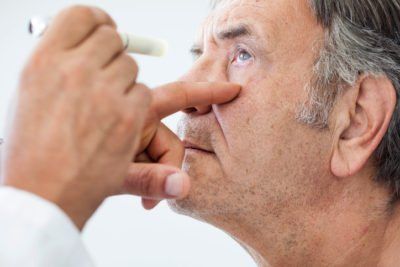Keratoconus Treatment
Home /
Keratoconus Treatment
Keratoconus is a corneal disease in which the cornea essentially thins out and bulges outward into a cone shape. Though the cause of this disease is unknown, symptoms are easy to detect. Some symptoms of keratoconus include blurry vision and sensitivity to light and glare. For most patients, symptoms typically start during puberty or in the late teens. Diagnosing this disease is fairly straightforward, and fortunately, there is treatment available to correct this condition.
Mild symptoms can be corrected with eyeglasses or possibly special hard contact lenses in the future. Our other forms of treatment include intacs, collagen cross-linking, and corneal transplants. Whether we use surgical solutions such as intacs and corneal transplants or special UV light and eye drops through collagen cross-linking, your vision is very likely to improve.
If you suspect you or your child has keratoconus or would like to learn more about our treatment options, call to schedule an appointment today. We diagnose and treat a variety of eye conditions, so you can fully trust us with your eye care needs throughout the Albany, Saratoga Springs and Schenectady areas.
Q:I want to see if I have keratoconus. What should I do?
A:If your vision or your glasses prescription has changed, if you are having difficulty wearing contact lenses that fit well in the past, or you have a family member with diagnosed keratoconus, ask to have a complete eye exam today.
A complete eye exam is important in screening for keratoconus because new technologies have recently become available that allow your doctor to detect keratoconus at a very early stage- perhaps even before you loose any vision. The doctor and staff will ask you many questions about your eyes and your vision. They will also ask about your family members eye conditions. This is important because about 10% of keratonus is thought to be genetic, and runs in families. There is also thought to be a connection between chronic eye rubbing and keratoconus and you will also be asked about this. The doctor will check your eyes to see if you have a glasses prescription. A refraction will be preformed. This is a subjective test that allows the doctor measure your glasses prescription. Often people with keratoconus can be nearsighted and have a certain degree of astigmatism. Next, the cornea will be imaged in high resolution and mapped using our advanced, state of the art, anterior segment tomographer. This is important because in the past, only the front surface was able to be imaged, and the back surface is important in keratoconus. The doctor will also examine the cornea with the slit lamp, as keratonic eyes will have characteristic features that can tell the doctor more about the health of your eye and indicate the severity of keratoconus, if it is seen. Finally the doctor will also examine the back of your eye, or the retina, to make sure everything else looks to be normal.
Patients with a new diagnosis of keratoconus will likely be followed every few months, or even more closely, if the doctor wants to make sure there is no progression. Please call us today for more information or to schedule an appointment.



